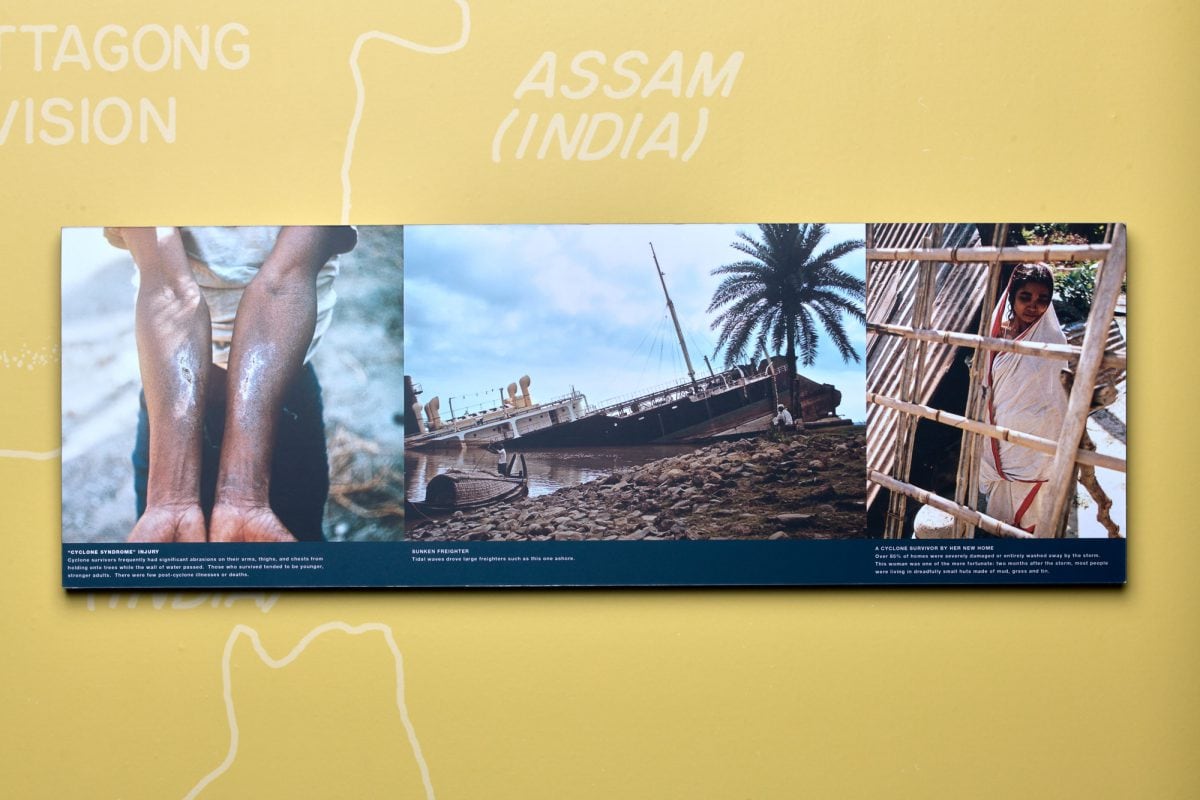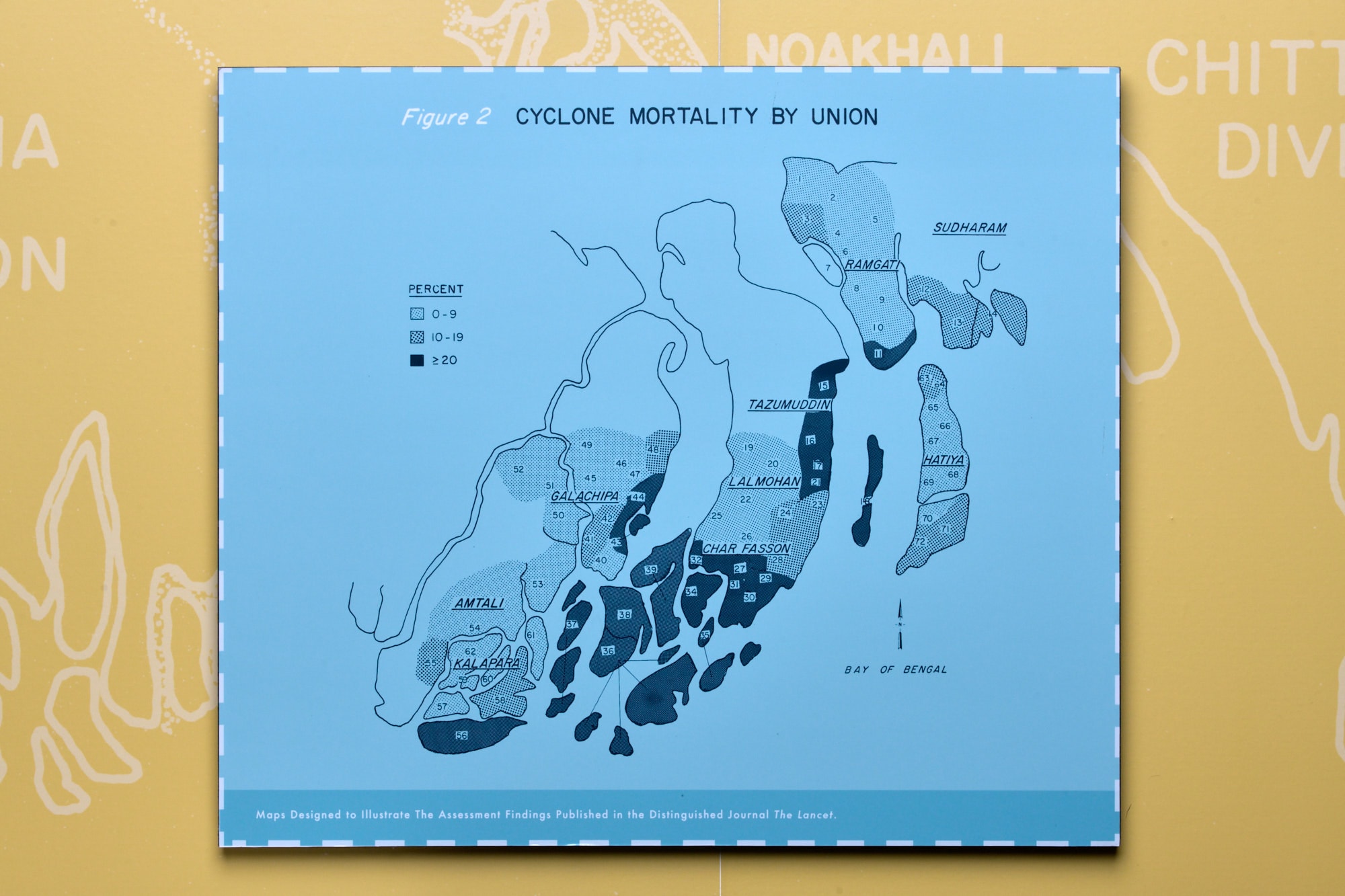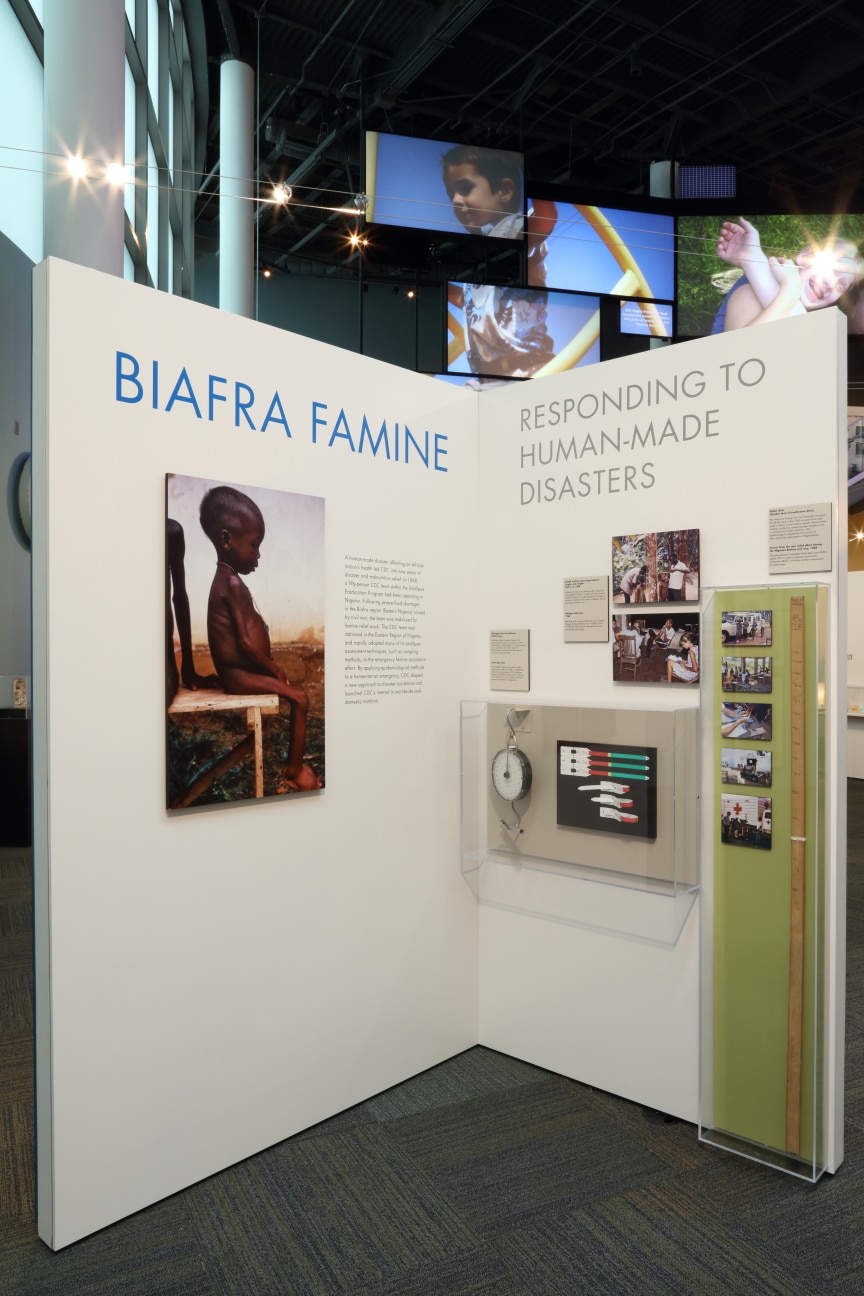Disaster Response – International
CDC Responds to Natural Disasters
Another international effort was the response to the Bhola Cyclone. In November 1970, CDC EIS officers and other epidemiologists were working on a nutritional survey of children living in rural Bangladesh. While they were there, a catastrophic cyclone, also known as a hurricane or typhoon, hit the country in its eastern state of Bhola. The cyclone was deadly, killing an estimated 300,000 people and destroying towns. CDC personnel performed two medical relief assessments, resulting in two landmark studies—the first a rapid assessment documenting post-cyclone injuries and diseases. The second study, which was conducted two months later, surveyed health, housing and environmental conditions.

Cyclone Syndrome
The mentioned study, the rapid assessment on injuries, documents “Cyclone Syndrome” on survivors. The photograph seen here shows a male cyclone survivor with typical cyclone syndrome injuries — cuts and deep scratches on the arm, thigh, and chest from clinging to the trees while the wall of water from the storm passed. A photograph of a larger shipping freighter ship demonstrates the storm’s strength. In addition to driving the massive freighter ashore during the storm, the powerful storm grounded the vessel and sunk it into the ground. In addition, more than 85% of homes were severely damaged or entirely washed away by the storm. As they tried to rebuild, survivors found they had limited resources. In a picture taken two months after the cyclone, one survivor found herself fortunate enough to live in a hut made with walls of mud and grass with a sheet of tin scrap metal for a roof.

An Epidemiological Approach
As part of their studies, CDC epidemiologists generated a map of the area showing the percentage of fatalities (the darker the area, the greater percentage of people that died) and tables demonstrating that relief operations need to use an “epidemiological approach to disaster assessment and assistance” to tailor to the on-the-ground needs of populations. Today, CDC continues to provide assistance with emergency responses such as hurricanes and other natural disasters.
CDC Responds to Human-Made Disasters
This exhibition’s final example of international relief provided by CDC is a human-made disaster. Shown here is a large picture of a malnourished African child sitting on a bench. His head is disproportionately larger than the rest of his body. His belly bulges out in the front because his body has digested his abdominal muscles and his ribs are visible. His feet and hands are swollen, and his arms and legs are very thin. The famine this child and his community faced was due to civil war in Nigeria when opposing parties cut off all relief aid to the boy’s community.

A New Approach to Disaster Assistance
A fifty-person team, including CDC members operating in Nigeria, was mobilized for famine relief work. In collaboration with partner organizations, CDC’s International Emergency and Refugee Health Branch conducted nutritional surveys in humanitarian emergencies. By applying epidemiological methods to a humanitarian emergency, CDC shaped a new approach to disaster assistance.
Two measurement devices on display here explain how the health care workers, without sophisticated medical equipment, assessed the children’s health. One is the Mid-Upper-Arm-Circumference band, which assessed malnutrition in children ages one to five. CDC epidemiologists devised this simple test that used an adjustable strip of paper to measure the circumference of a child’s upper arm in centimeters. Measuring the child’s arm circumference allowed health workers to place children into three categories: healthy, needs to be monitored, and needs immediate assistance.
Another method was using a “Salter” type scale, a small, spring scale. It hangs by a large metal hook at the top and has a metal bar at the bottom to weigh infants under six months. A round dial between the hook and bar adjusts to measure infants’ weights. Because they’re portable, Salter scales are still frequently brought on international humanitarian emergencies to conduct nutritional surveys.
CDC’s assessment of the state of malnutrition in the Biafra region showed the need for emergency humanitarian aid, to which the international community quickly reacted and assisted with relief supplies and food.